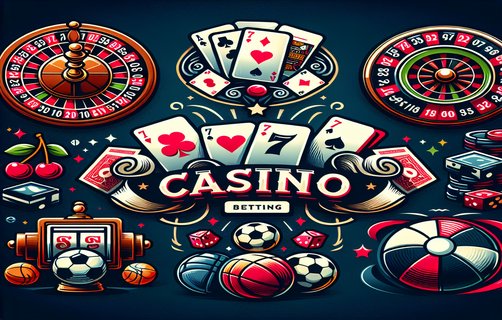Mastering Poker: Strategies, Tactics, and Psychology for Success
In the exhilarating world of poker, understanding the game goes beyond the basic rules; it requires a blend of strategic thinking, psychological insight, and analytical skills. In this comprehensive guide, we will delve into several vital elements that contribute to poker success, including the gamble feature, poker table position strategies, the D’Alembert system, heads-up strategies, user ratings, bluffing techniques, and spotting poker tells.
Gamble Feature
The gamble feature in poker provides an exciting layer to the game, allowing players to take risks on top of their existing bets. However, it’s important to approach this feature with caution. The gamble feature can exponentially increase your winnings, but it also amplifies the risk of losing your stake. Beginner players should focus on understanding when to engage in this option and ensure that they are comfortable with the potential outcomes. Utilizing this risk-reward ratio effectively can significantly elevate one’s gameplay.
Poker Table Position Strategies
Your position at the poker table is one of the most influential factors affecting the outcome of your game. Positions are typically categorized as early, middle, and late. In early positions, you have the least information about other players' actions. Therefore, adopting a tighter playing style is prudent; only strong hands should be played aggressively. In contrast, being in a late position allows you to gather valuable information and make informed decisions based on your opponents’ actions. Utilize this to widen your range and capitalize on weaker players who act before you.
D’Alembert System


The D’Alembert system is a popular betting strategy used in various gambling contexts, including poker. This system follows a simple premise: increase your bet after a loss and decrease it after a win. The goal is to balance losses with eventual wins over time. While it offers a structured approach to betting, players must remain aware that it does not guarantee profits. As with any betting system, it is essential to manage your bankroll effectively and not become overly reliant on a single strategy to dictate your play.
Heads-Up Strategy
When the game narrows down to a heads-up situation, the dynamics change drastically. In this scenario, aggression becomes crucial. Players should be prepared to widen their hand ranges, bluff more often, and apply pressure on their opponent. A keen observation of your adversary's playing style will provide opportunities to exploit weaknesses. Additionally, maintaining a balanced approach between aggressive and defensive tactics is essential to outmaneuver your opponent and secure victory.
User Ratings
A newer dimension in the poker landscape is the role user ratings play in assessing opponents. Players can utilize ratings to gauge the skill level of their opponents before engaging in a game. High ratings signal strong competitors, while lower ratings might indicate a less experienced opponent. This intelligence allows players to strategize accordingly, opting for more aggressive plays against weaker players while adopting a cautious approach against seasoned opponents.
Bluffing Techniques
Bluffing is an art form in poker, often separating successful players from novices. Effective bluffing requires understanding the right moments to apply pressure and the ability to read the table dynamics. A common technique is to represent a strong hand when your actual holdings are weak. The key is to maintain a consistent betting pattern that aligns with your narrative. However, over-bluffing can backfire, so it is crucial to evaluate your opponents' tendencies and adjust your strategy accordingly.
Spotting Poker Tells
Every poker player has tells – subconscious behaviors that can reveal the strength or weakness of their hands. Learning to spot these tells can give you a significant edge. Common tells include changes in posture, eye contact, or betting patterns. Equally important is learning to control your own tells when you wish to bluff. Developing a 'poker face' through practice and self-awareness contributes to a more formidable poker persona.
In conclusion, mastering poker is a multi-faceted endeavor that involves a mixture of strategic planning, psychological insights, and practical experience. By integrating gamble features judiciously, honing your table positioning, employing systems like D’Alembert smartly, customizing your play for heads-up and overall table dynamics, capitalizing on user ratings, honing your bluffing techniques, and spotting tells, you can enhance your game drastically. With time and practice, you will find yourself becoming a formidable opponent at the poker table, navigating the complexities of the game with skill and confidence.
